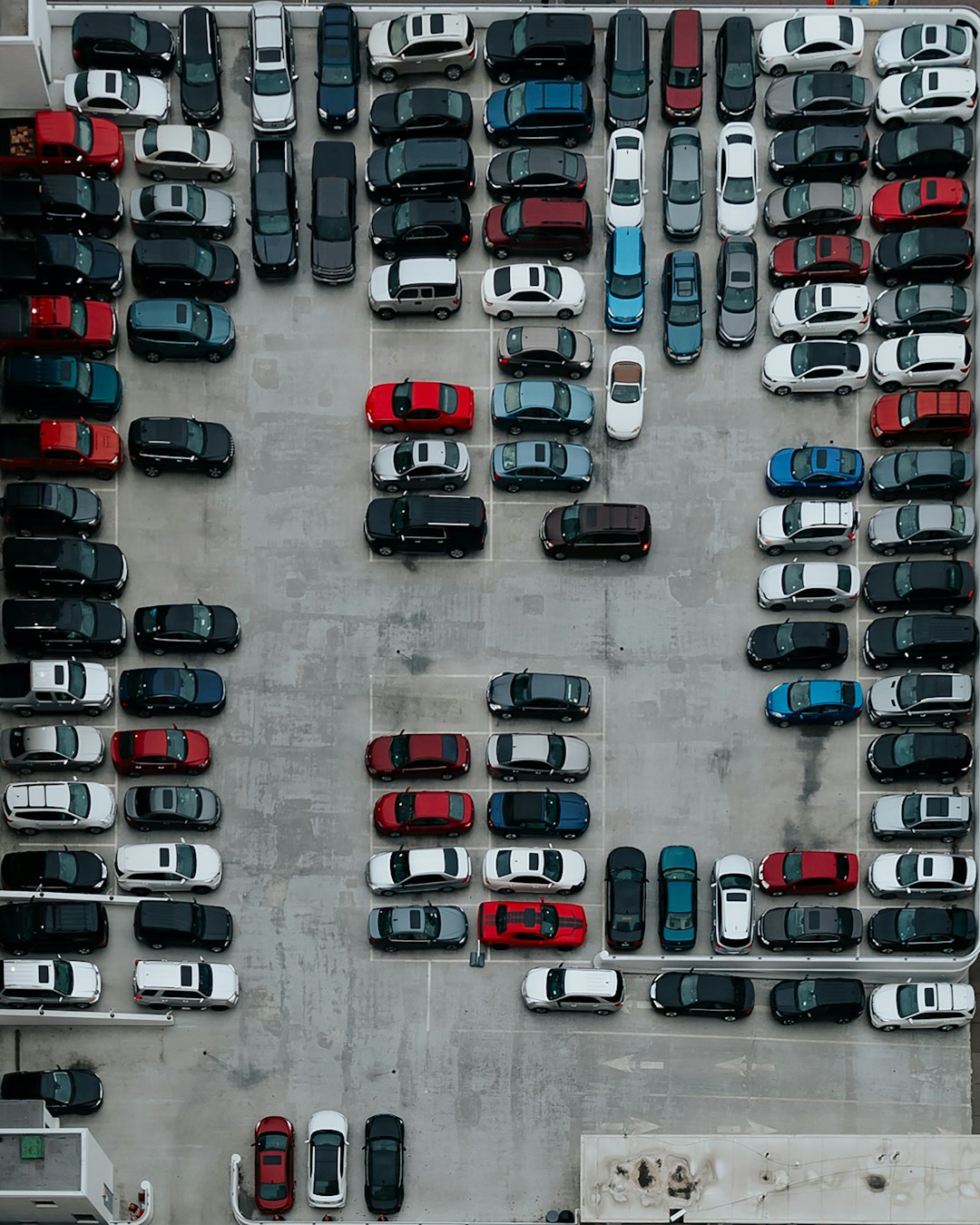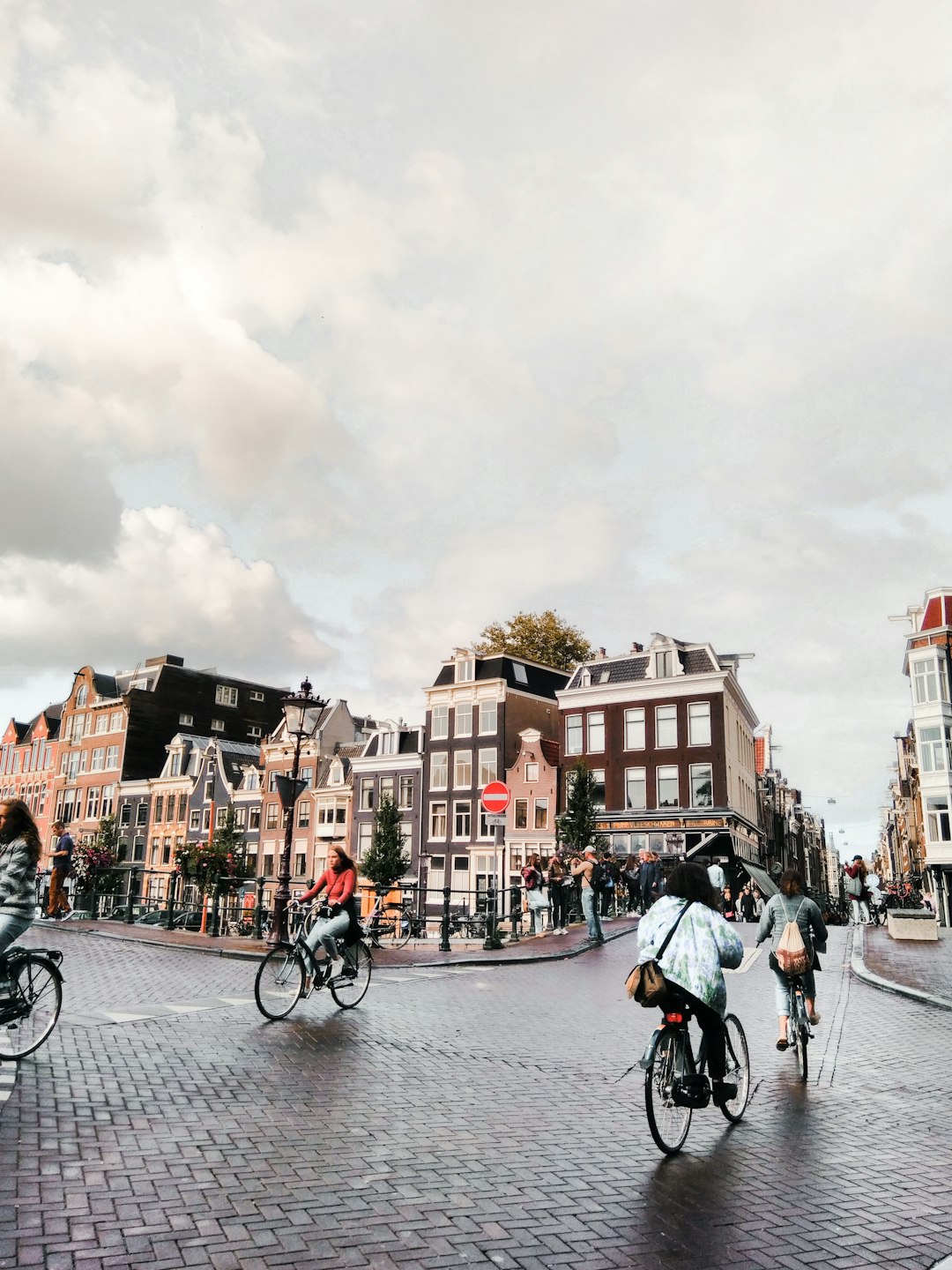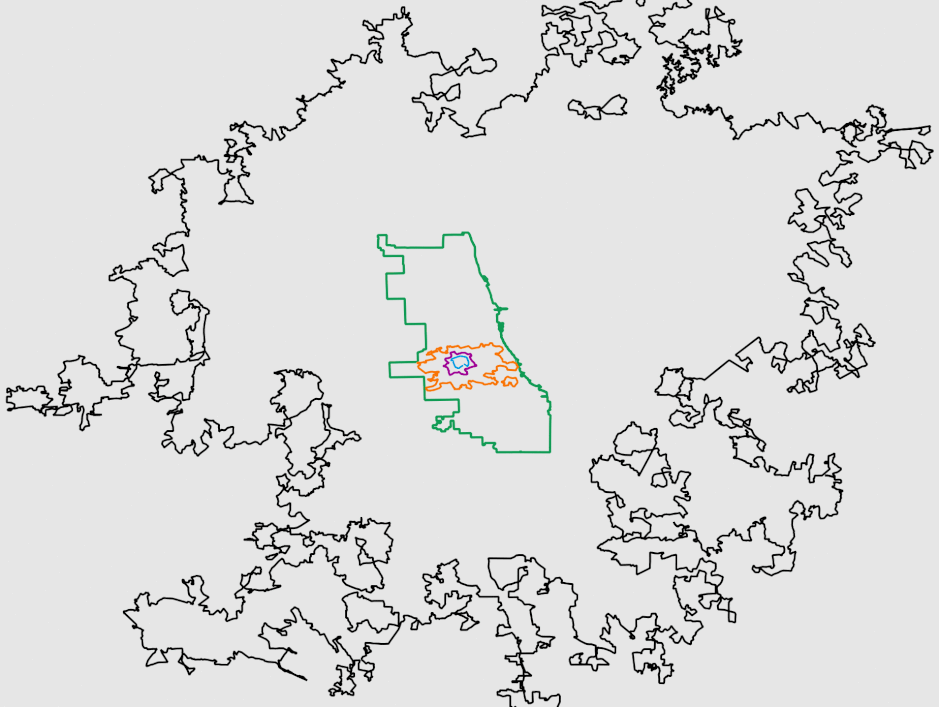Alice never could quite make out, in thinking it over afterwards, how it was that they began: all she remembers is, that they were running hand in hand, and the Queen went so fast that it was all she could do to keep up with her: and still the Queen kept crying ‘Faster! Faster!’ but Alice felt she could not go faster, though she had not breath left to say so.
The most curious part of the thing was, that the trees and the other things round them never changed their places at all: however fast they went, they never seemed to pass anything. ‘I wonder if all the things move along with us?’ thought poor puzzled Alice. And the Queen seemed to guess her thoughts, for she cried, ‘Faster! Don’t try to talk!’
Cars have had exactly the same paradoxical effect on day to day life: we move faster and faster, but everything continues to get farther away.
Known as the Red Queen Effect, this explains why cars allow us to move much faster today than 100 years ago, but the net result is that in our day to day lives we don’t have access to much more stuff. We move faster, yet get no closer.
As you increase transport speed you also dramatically increase distance between things and the space needed at each location to accommodate parking. The net result is a small or no improvement in access. Further, households pay significantly more in transport costs and you get a host of negative externalities - pollution, tens of thousands dying each year in crashes, etc.
To try to put it more technically:
Transportation speed increased thanks to the car, but the associated expansion of the urban environment that the car operates within grew just as fast. The net result is that though the car moves multiple times faster on average than a person on foot or bike, we are farther away from the average destination than if everyone walked or biked.
Here’s a map from David Montgomery of CityLab that makes this point well. Watch it for a few seconds and in order you will see the borders of:
Ancient Rome (walking)
Medieval Paris (walking)
Victorian London (rail)
Early 20th Century Chicago (bike + streetcar)
Modern-day Atlanta (private automobile)
With each new transport technology, the borders of the city expanded to accommodate it.
The question is: with a very fast car to get around in, is the average person in Atlanta any closer to “stuff” - restaurants, jobs, services - than the average person in Medieval Paris was?
I’m not so sure. In Atlanta the average person moves much faster than the average resident of Medieval Paris, but at the same time everything is much farther away because of the type of infrastructure cars require:
What Happened?
When car ownership for the masses was first made possible by Henry Ford, this previously expensive toy became an everyday item available to millions of people.
But as the tool became more widespread, the environment it operated within had to be reshaped to accommodate it. This meant both building lots of new infrastructure and tearing down old “outdated” things (historic buildings, neighborhoods, trams) and replacing them with parking lots and roads to ensure the ease of movement for the cars:
There are a lot of reasons to be upset about the way cars have reshaped the environment, but I will not dwell on that here. I only want to focus on the energy and resource waste that accompanies cars as the dominant mode of transport.
Once everyone has adopted this transportation technology and the built environment has reconfigured to accommodate it, the new equilibrium point is that everyone’s average travel time stays roughly the same. So we accomplish the same things, but use much more energy, money, and create many more externalities (traffic deaths, pollution, congestion, etc.) to do it.
The Doorman Fallacy in Action
Business, technology and, to a great extent, government have spent the last several decades engaged in an unrelenting quest for measurable gains in efficiency. However, what they have never asked, is whether people like efficiency as much as economic theory believes they do. The ‘doorman fallacy’, as I call it, is what happens when your strategy becomes synonymous with cost-saving and efficiency; first you define a hotel doorman’s role as ‘opening the door’, then you replace his role with an automatic door-opening mechanism.
The problem arises because opening the door is only the notional role of a doorman; his other, less definable sources of value lie in a multiplicity of other functions, in addition to door-opening: taxi-hailing, security, vagrant discouragement, customer recognition, as well as signaling the status of the hotel. The doorman may actually increase what you can charge for a night’s stay in your hotel.
When every function of a business is looked at from the same narrow economic standpoint, the same game is applied endlessly. Define something narrowly, automate or streamline it - or remove it entirely - then regard the savings as profit.
Rory Sutherland, Alchemy
The parallels with transport should be clear. If you define transport efficiency very narrowly as “moving the most number of cars per hour through an area” or “maximizing travel speed” then you become very focused on making roads wider, and making sure no annoying pedestrians cross them as that would interrupt the smooth flow of traffic.
The problem, obviously, is that this narrow framing is how you end up with images like I shared above.
And it misses the point: getting from A to B is too narrow a framing. What good is speed if people aren’t getting access to the stuff that actually matters? What good is driving 5 times as fast if I’m no closer to jobs or friends?
A Losing Game
In many ways the goal of living systems is parsimony - doing the most work with the least input or resource use.
Warren Buffett describes the Red Queen Effect at work in his textile business, and how he thinks about allocation of a company’s primary energy source: capital.
Over the years, we had the option of making large capital expenditures in the textile operation that would have allowed us to somewhat reduce variable costs. Measured by standard return-on-investment tests, in fact, these proposals usually promised greater economic benefits than would have resulted from comparable expenditures in our highly-profitable candy and newspaper businesses.
But the promised benefits from these textile investments were illusory. Many of our competitors, both domestic and foreign, were stepping up to the same kind of expenditures and, once enough companies did so, their reduced costs became the baseline for reduced prices industrywide. After each round of investment, all the players had more money in the game and returns remained anemic.
In a static world, these investments would have made sense: you invest money in more efficient equipment and earn better returns.
But much to the dismay of economists and other academics: we don’t live in a static world.
What actually happens is all the other companies do the exact same thing, and the goalposts move yet again. To keep from falling behind, you must make the investment, but in the end everyone else does too you are no better off.
So here we have a situation where companies had to continually run faster and faster (invest more capital into the business) just to stay in the same spot earning meager returns on the incremental capital.
Buffett’s wisdom was largely in learning that was a loser’s game and opting out of it altogether.
So too is it with cars. If each person could just have a car and suddenly expand his or her range, that would be wonderful!
But what actually happens is: everyone gets a car, and we have to configure our entire country to accommodate this. The net result is that houses, stores, and offices are dramatically more spread out, and people have access to no more than they did before the car, while consuming dramatically more energy to accomplish the same thing.
So What do we Do?
I think we would be wise to mirror Buffett’s approach in how we create cities: rethinking the game rather than competing within it; circumvention rather than competition.
I consider myself an optimist. The tough thing is though, I see no way for a city built entirely around automobiles to easily be retrofitted to be friendly for other transport technologies.
You can make a city that is friendly for pedestrians friendly for cars simply by tearing down all the old buildings and paving more roads and parking lots (we did this successfully!)
You cannot, however, turn a car-friendly city back into a pedestrian friendly city. Once you’ve gone auto, you can’t go back.
You also can’t retrofit other transport solutions like public transport because these require at least pockets of density to be feasible. Suburban cities don’t have that - it’s just an endless sea of mostly uniform density. There is no center or node to connect to. There’s no there there.
So my answer is, of course: create something new.
The Ultimate Sin
As hinted at above, one of the worst things a biological organism can do is waste energy.
Propelling massive steel boxes on short trips - whether with fossil fuels or electric motors and batteries - wastes a lot of energy.
How could we design a city that allows for lots of access for residents while being a little more parsimonious with our energy use? Let’s do some transport math using the chart below.
Cars can go very fast, but their speed in constrained by the environment they’re most used in: cities. In a city I would guess cars typically average no more than 30-40 miles per hour, and much less during peak travel times. And because of their size they use a lot of energy to do this.
But energy use is only part of it - what about how much “stuff” a transport mode provides access to? Let’s do some quick math.
When you look at old Western European cities, you see that most evolved to have a radius of roughly a mile from the center to edge because that is how far a person can walk in about 20 minutes. To cross the entire city is about 40 minutes, which is about the longest regular commute length people will tolerate regardless of transport type.
Average walking speed is about 3.25 miles per hour. This gives us a range of 1.08 miles from the center of the city to any edge.
So the pedestrian-oriented city is about 3.68 square miles or 2,355 acres. (A = π * 1.083²). Depending on how close together things are built, this represents how much “stuff” - jobs, restaurants, stores, services, etc. a person in the city reasonably has access to.
This isn’t huge (especially when compared to modern car-oriented cities like Atlanta) but because people walking require so little space, the environment can be quite compact and pretty.
Bikes Bikes Bikes
What if we instead decide to lay out our new city around a different mode of transport: the electric bike?
These combine many of the benefits of walking (low space requirements, no pollution, healthy for user, low energy use, and no fatal crashes) with speeds about half that of cars (15-20 miles per hour).
Using the same 20 minute commute assumption and an average transport speed of 15 miles per hour, that means an individual can now comfortably travel 5 miles from the center to the boundary.
The city resident now has access to 78.5 square miles (50,240 acres) (A = π * 5²) of “stuff” in the city!
This is a 21-fold improvement in accessibility with a very modest increase in space needed.
But wait! The advantage of bikes isn’t just that they’re faster than walking and require less space than cars, but that they use dramatically less energy than cars.
According to this article, an ebike uses 5.3 watt hours per kilometer traveled. Converting that gives us .019 megajoules per kilometer traveled. Frankly, that seems a little low if the chart above is correct and just walking requires .16 megajoules per km.
In the name of conservatism, I will assume an ebike uses 5 times more energy than the chart above says a regular bike uses - transport nerds/engineers please help me out here! This assumption might be off.
In that case, then residents of the city now have access to 21 times the area, at 1/7th the energy consumption, without pollution, traffic fatalities, or soul-crushing parking lots everywhere. Neat.
Oh and the city could look more like this:
Than like this:

This aesthetic improvement alone is nothing to sniff at.
We would end up with much more compact (but still quite spacious, even for the US!) cities. Maybe most important for the long term viability of our species: these cities would in aggregate use much less energy.
This is an important advantage for the residents too - the average American spends 16% of his or her income on transport. Imagine if we drop that just by half - that’s almost an extra $5,000 per year that everyone gets to spend on whatever the hell they want!
Should you find yourself in a chronically leaking boat, energy devoted to changing vessels is likely to be more productive than energy devoted to patching leaks.
Making cars more efficient or consuming a different form of energy (electric instead of oil) is kind of like frantically bailing water out of a boat with a hole in the bottom. To really solve this problem we need to invent something different.
Until next time,
Joel









